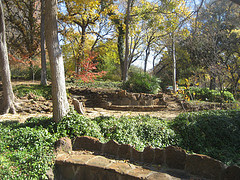
As the authors of Wing Nuts: Screwy Haiku say in their forward, "Senryu is the kissin' cousins of haiku!" A senryu poem has the haiku structure and is often confused with it. Named after its inventor, Senryu Karai, the poem's topic centers on human nature, particularly the dark side. Cynicism or dark humor can underlie the images. Modern senryu can be a form of flash fiction, like a snapshot of a situation but layered with meaning. (http://www.ehow.com/)
Introduction: While this book had me at the title: Wing Nuts: Screwy Haiku, I was delighted to open the book and be satisfied with hilarious senryu's that are silly, pithy, and filled with outrageous remarks! This type of poetry would be best experienced following a unit on Haiku.
My older sister
gets a complete makeover--
very mascary!
Freedom vanishes
as the babysitter arrives...
kids are tied in nots
Traveling circus--
the knife thrower
hiccups
Extension: Read each of the three senryu's (that are written on the board) and without discussing or showing the book illustrations, ask the students to illustrate one of the senryu's. Take time to read each poem again and ask students to share their interpretations. Leave the book available for students to read other senryu's and to enjoy the comical illustrations! This book and activity would be a great introduction for a lesson on figurative language (simile, metaphor, alliteration, onomatopoeia, personification, hyperbole, idioms, clichés).Janeczko, Paul B. and J. Patrick Lewis. 2006. Wing Nuts: Screwy Haiku. New York: Little, Brown and Company.
Photo courtesy of http://www.target.com/


No comments:
Post a Comment